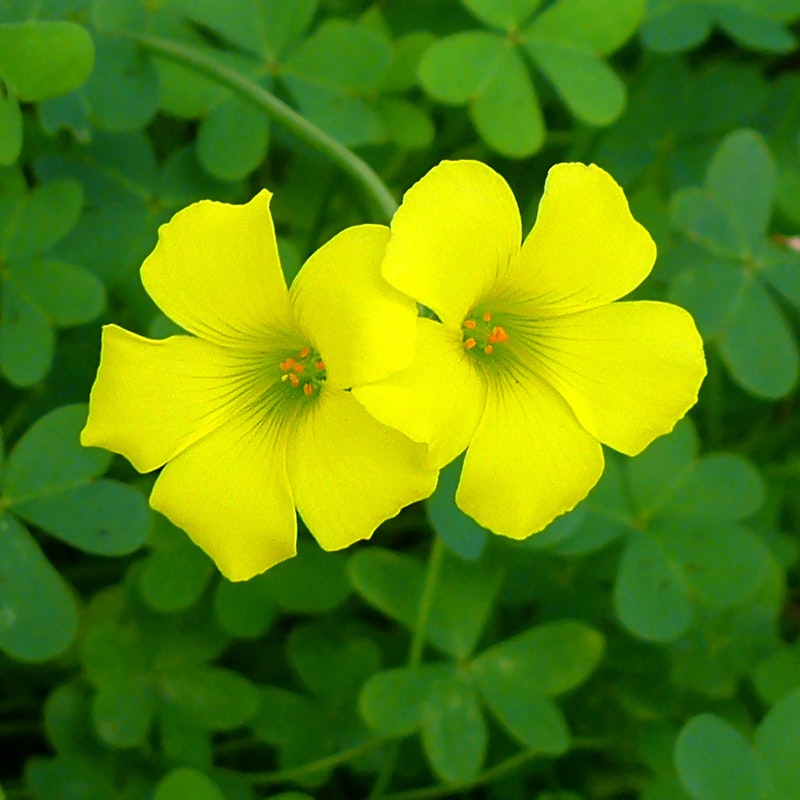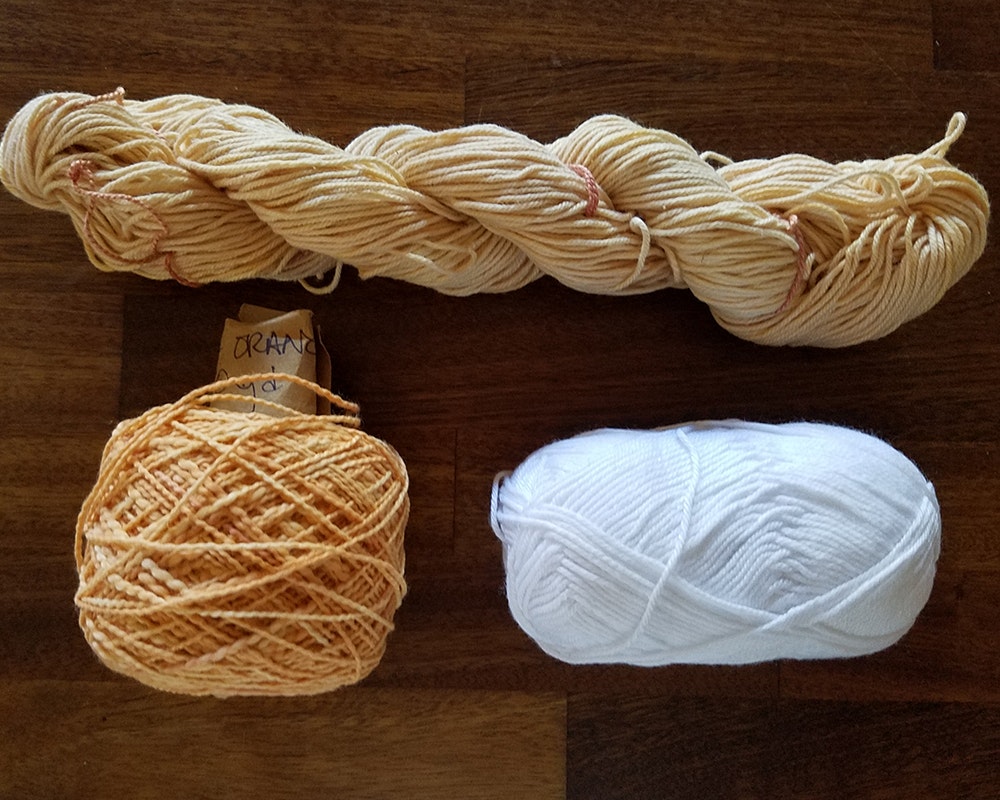It’s probably best if I come right out at the start and admit I am not a dyer. Occasionally I like to play around with dyeing, but I don’t have a dye kitchen, and I don’t keep notes. That said, I am aware of the safety precautions that must be taken with dyeing, and I use separate containers and equipment for dyeing and for cooking. All this is to tell you about my latest experiment with oxalis, known to many of us who grew up in California as sour grass. Oxalis may be a welcome plant in other places, but here it is considered a noxious weed.

Oxalis looks inocent enough, but here in Southern California, it’s considered a weed. Photo credit: Zachi Evenor
I have heard for a long time that oxalis could be used to dye yarn a bright yellow-green. Spring is starting, and our “lawn” is filled with oxalis, which looks a lot like clover. The bees have been going crazy in the yellow flowers. I had 3 balls of white DK weight cotton, so I decided to give dyeing with oxalis a try with one of them. I Googled oxalis and was shocked to read that it is considered toxic. (As kids, we used to chew it, which may explain a lot!) I also learned that if you add baking soda to the dyepot, you can shift the color to a more golden color.
I gathered a bunch (4 oz) of the flowers (leaving some for the bees), put a ball of the white cotton (137 yd) into a skein that I washed, and then dumped both into a large glass jar with some hot water. I shook the jar several times and left it in the sun for 4 days, giving it a shake from time to time. In the jar, the yarn looked very yellow-green, but washing seemed to change its color from yellow-green to a light melon color. Hmmm. I was hoping for a more intense color.
The next weekend, I reread the instructions, and this time I thought I followed them, putting the flowers in a cheesecloth bundle and boiling them until I had an intense-looking dyebath. I added a couple of teaspoons of baking soda and put the same yarn into this new dyebath. Just to be sure it wasn’t the cotton that was the issue, I skeined a few yards of white wool and added it to the dyepot.
I simmered the yarns for 20 minutes and then let the dyepot cool before rinsing. Imagine my surprise when the cotton skein really didn’t seem to change in color. Both skeins were basically the same light melon. Although it wasn’t what I expected, the color is a perfect match with yarns I dyed using mud dyes. I’m planning to use both to weave a runner on my rigid-heddle loom.

Mud-dyed, oxalis-dyed, and plain white yarns ready for weaving. Photo by Susan E. Horton
My husband mowed the lawn the other day, so my experiments are over for this year, but it really has me wondering about the yellow-green color. I may have to do a bit more research when I try it again next year. Perhaps my playing around with dyeing is getting a bit more serious.
Weave well,
Susan

